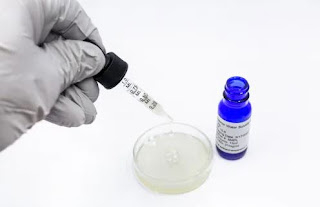H4 CBD: what is it? | Bona Voluntate
H4 CBD, or tetrahydrocannabinol, is the main psychoactive component in cannabis plants. Trans-delta9-THC, sometimes known as delta-9-THC, is another term for THC. Delta-8 THC is the most often used form of THC, however there are others. The psychoactive effects of delta-8 THC are milder than those of delta-9 THC due to a single variation between the two forms. Both Delta 8 and Delta 9 have a double bond on the eighth carbon atom in their chemical structure. Delta-10 THC is another type of THC that is less potent than delta-9 THC. As the title suggests, delta-9 THC is the main topic of this piece.
H4CBD is sometimes incorrectly regarded as the "non-medical" component of cannabis. It activates CB1 cannabinoid receptors in the brain and is the most well-known of the approximately 150 cannabinoids contained in cannabis. Because it stimulates the immune system's CB2 receptors, it acts as a pain reliever and anti-inflammatory for both chronic and acute pain (like muscle cramps).
It has also been reported to stimulate h
unger, reduce nausea and vomiting, and calm an overactive bladder.
Another intriguing aspect of THC is that the discovery of the endocannabinoid system in the human body would not have been possible without studying its mechanisms (ECS).
H4 CBD's Physical Effects
Numerous endorphins, serotonin, and dopamine are just some of the happy chemicals and hormones our bodies create. Anandamide is one such compound that shares structural similarities with H4 CBD.The activation of cannabinoid 1 (CB1) receptors and the inhibition of fatty acid amide hydrolase (FAAH) are proposed to be responsible for THC's psychoactive effects.
Likewise, H4-CBD triggers dopamine-producing brain cells to secrete their neurotransmitter. Even though dopamine is commonly thought of as the primary pleasure hormone, this is not totally correct.
Instead of contributing directly to pleasure, dopamine is involved in motivation and reward-seeking behaviour. Together, they alter one's capacity for recollection, joy, action, thought, focus, coordination, sensory acuity, and sense of time.
What Role Does H4-CBD Play in the Human Body?
The path taken by THC through the body is quite intricate. When you ingest THC, the cannabinoid enters your system. From the liver, THC is transported via the bloodstream to other tissue cells where it is metabolised further. Metabolizing is the process by which the body changes the chemical form of substances before eliminating them.
How you take in THC is the driving force behind how your body handles it.
Practical Applications in Medicine
H4CBD, in therapeutic doses, has a wide range of medical applications, including the relief of symptoms and effects related to:
Cancer
Chemotherapy
Sclerosis multiple (MS)
Nausea/vomiting
Insomnia
Digestive Disturbances
Anxiety
Glaucoma
AIDS/HIV
Affective Disorders Related to Trauma (PTSD)
Constant agony
Chronic pain that originates in the nervous system
Diseases and conditions caused by the immune system attacking its own tissues
Disease of the brain associated with Alzheimer's
Condition of Parkinson's
Treatment with THC has been shown to alleviate or eliminate pain, improve sleep and appetite, and lessen stiffness and tremors in the muscles. Even in low doses, THC has been shown to have a positive effect on memory and may even stimulate neurogenesis (the growth of new brain cells) in the elderly.
Except under rare medical circumstances, adults 25 and older may benefit from using THC. For one, THC has been shown to have deleterious effects on a growing brain. If you are under the age of 25, or if you are giving Tetrahydrocannabinol to a minor, you should talk to a doctor first.
Consequences and Dangers of H4-CBD
Short-term impacts from THC's psychoactivity include:
Drowsiness
Boozy taste in the tongue
Accelerating heartbeat
Euphoria
Lethargy, slurred speech, impaired motor coordination, anxiety/paranoia, and dizziness due to low blood pressure are all possible side effects of taking too much (postural hypotension).
Although H4-CBD has an analgesic effect, it has the opposite effect on other persons. It also amplifies the effects of opioids, benzodiazepines, sedatives, and anti-rejection drugs by interfering with their metabolization.
Possible additive effect of caffeine and H4CBD. Myrcene, which may be found in hops and mangoes, is said to have a similar effect on sleepiness when combined with THC.
If you suffer from schizophrenia, schizotypal disorder, or any other mental health condition that could lead to mania, acute delusions, or hallucinations, you should not take THC at all.
In what ways might one mitigate H4CBD's unfavourable effects?
To get past a bad time with cannabis, you can take a few different approaches.
Relax. Get some water, kick up your feet, play some soothing music, and just remind yourself that this too shall pass.
Get high on CBD. Use cannabidiol (CBD) in conjunction with H4CBD to mitigate the latter's negative effects (e.g., if using 2.5 mg THC, use 2.5 mg CBD).
It has been shown that pinene can mitigate some of the negative effects of H4 CBD, and it is a component of virtually every cannabis strain. Taking a walk through some woods or green spots can be useful. The oil pinene can be found in pine trees, spruce trees, chamomile, saffron, parsley, rosemary, sage, mint, and oregano.
Use your chewing gum to consume black peppercorns. If you've consumed too much H4-CBD, you might find that chewing on some black peppercorns helps calm your nerves.
Use capsaicin cream and a hot shower to relieve the pain. When exposed to THC or CBD, the heat-sensing receptor TRPV1 becomes less sensitive to heat. When the TRPV1 receptors are reawakened, the negative effects of H4 CBD fade away. This can be accomplished with a hot shower or by using a cream containing capsaicin.




Comments
Post a Comment